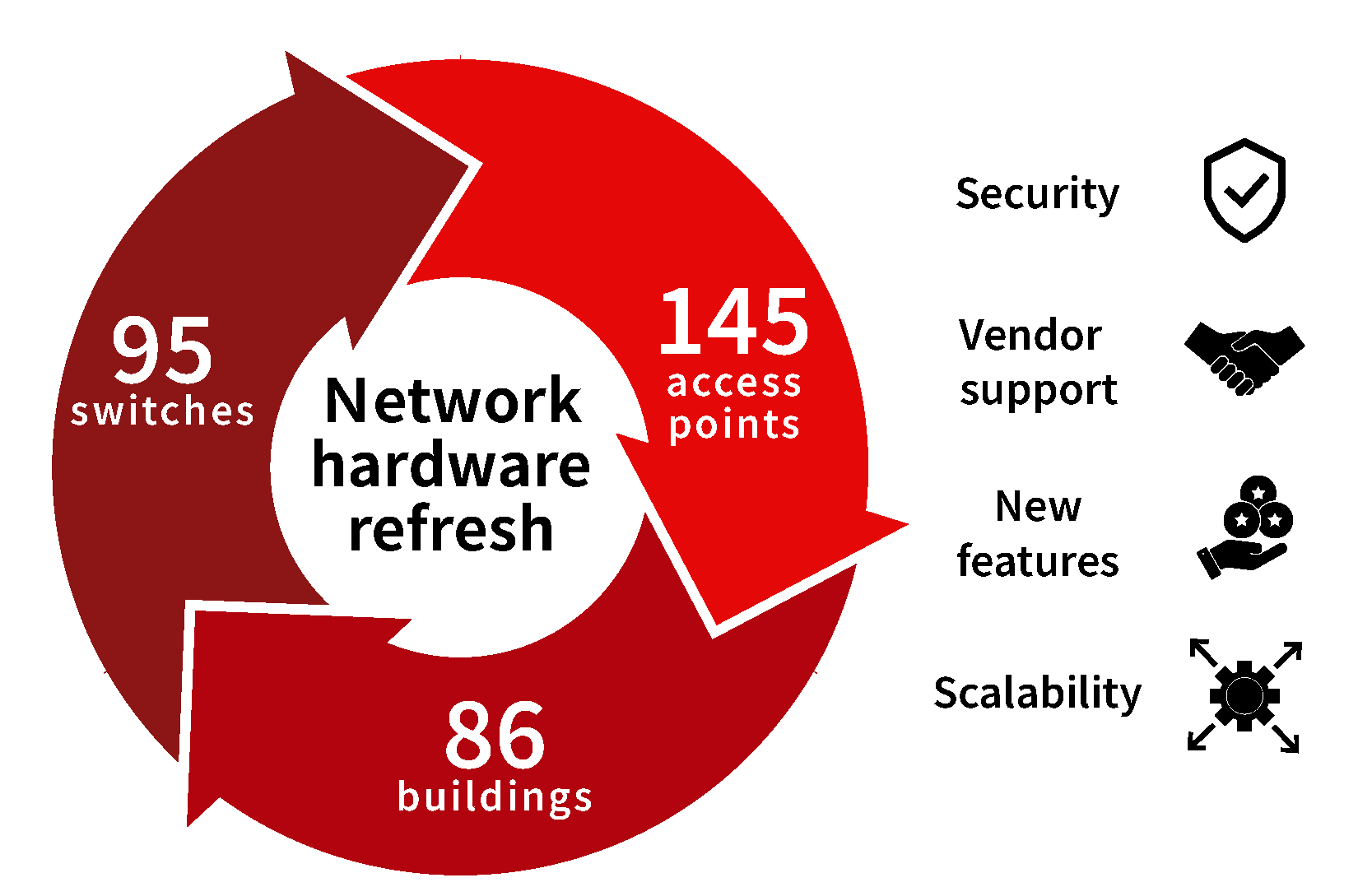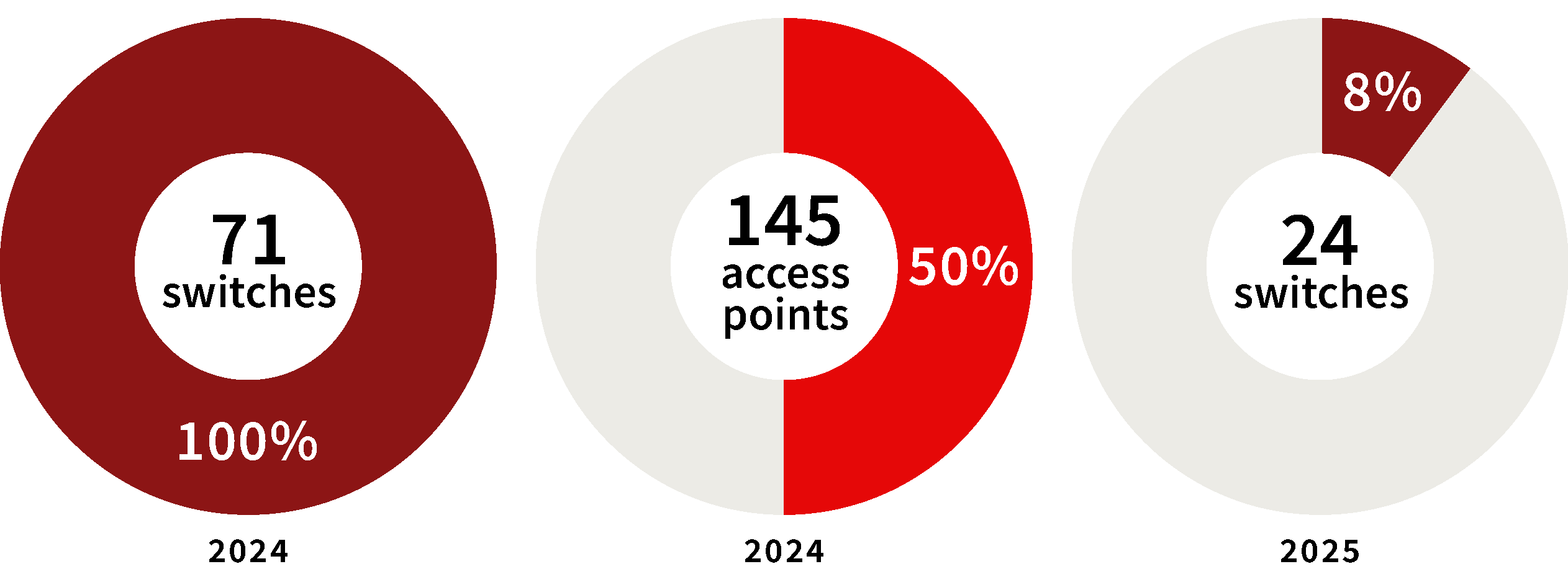How a network hardware refresh benefits the Lab
- Enhance IT security
- Continued vendor support for hardware and software
- Take advantage of new features and technologies
- Enhanced scalability
Three key factors guiding this project
- Ensuring safety
- Balancing workloads
- Minimizing disruptions to the Lab’s mission
The project encompasses approximately 95 switches and 145 access points (APs) distributed across 86 distinct buildings.


